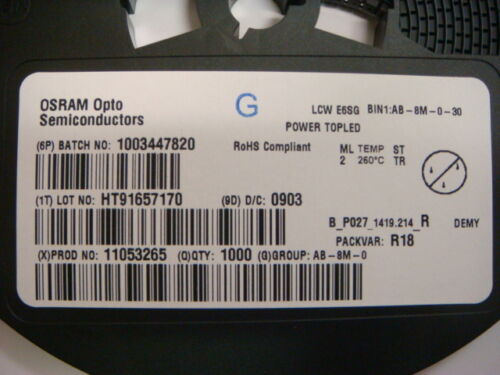KB02
Well-Known Member
With a current project I am working on for the layout, and other future projects that I have in mind, I would like to add some lighting. LED's certainly seem the way to go, but when I start looking for some, I just get confused. Could someone (or a group of someones... like, this group of someones?) help me expand my knowledge so that I at least know what to look for when shopping for LED's?
Here is what I know (and understand): An LED (or Light Emitting Diode) is a solid state relay that emits light when current is passed through it. An LED has an Anode (Positive) and a Cathode (Negative) and is polarity sensitive (won't work if plugged in backwards). AND, LED's are also sensitive to the power running through them and can easily be burnt out if too much power is applied - hence the need, in many cases, for a resistor (which converts a set amount of electrical energy passing through it into heat energy, thus reducing it's output as compared to its input).
I get the basics.
Now, you might notice that I mentioned "Power" in the above statement instead of voltage, wattage or amperage. This is where my understanding of electrical theory fails me. I understand that the bigger the number, the more power. Voltage I get, in and of itself. Wattage I get, in and of itself. But how they relate to each other? I just don't get it. What understanding I do have about electricity as it relates to lighting comes from Automotive and Theatrical lighting (self trained in the former and formally in the latter) where certain principles (voltage) are set and the desired results are clear (Brighter is better... usually). This knowledge does not really translate well to artistic lighting design on the layout, though. I found a great little 12v LED strip in the automotive section of Walmart that I could easily put inside my roundhouse. But the end result, I'm sure, would look like they somehow managed to capture the sun inside the building.
SO, other than physical size, what should I look for when LED shopping? How do you determine an LED's voltage based off the label (I find them confusing compared to the 120v/60w lamp in the fixture beside me)?
I want to install some lighting in the roundhouse I am building (and other future buildings) as well as some exterior lighting. While I appreciate the "ready-made" options that are out there, I would rather know WHY that resistor goes with that lamp - with this knowledge, I can customize the work I do to the situation I am working in.
Thanks for any help you are willing to offer!
Here is what I know (and understand): An LED (or Light Emitting Diode) is a solid state relay that emits light when current is passed through it. An LED has an Anode (Positive) and a Cathode (Negative) and is polarity sensitive (won't work if plugged in backwards). AND, LED's are also sensitive to the power running through them and can easily be burnt out if too much power is applied - hence the need, in many cases, for a resistor (which converts a set amount of electrical energy passing through it into heat energy, thus reducing it's output as compared to its input).
I get the basics.
Now, you might notice that I mentioned "Power" in the above statement instead of voltage, wattage or amperage. This is where my understanding of electrical theory fails me. I understand that the bigger the number, the more power. Voltage I get, in and of itself. Wattage I get, in and of itself. But how they relate to each other? I just don't get it. What understanding I do have about electricity as it relates to lighting comes from Automotive and Theatrical lighting (self trained in the former and formally in the latter) where certain principles (voltage) are set and the desired results are clear (Brighter is better... usually). This knowledge does not really translate well to artistic lighting design on the layout, though. I found a great little 12v LED strip in the automotive section of Walmart that I could easily put inside my roundhouse. But the end result, I'm sure, would look like they somehow managed to capture the sun inside the building.
SO, other than physical size, what should I look for when LED shopping? How do you determine an LED's voltage based off the label (I find them confusing compared to the 120v/60w lamp in the fixture beside me)?
I want to install some lighting in the roundhouse I am building (and other future buildings) as well as some exterior lighting. While I appreciate the "ready-made" options that are out there, I would rather know WHY that resistor goes with that lamp - with this knowledge, I can customize the work I do to the situation I am working in.
Thanks for any help you are willing to offer!



